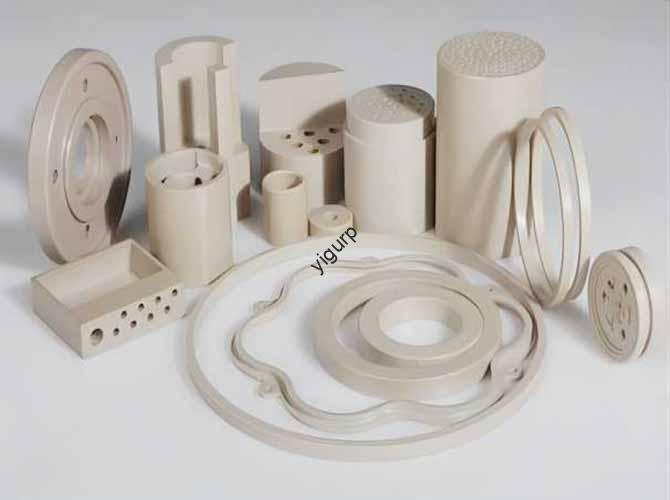Ever found yourself stuck in product development—waiting weeks for a prototype, overspending on materials, or struggling to test complex designs? 3D printing solid prototypes are the solution. These physical, fully formed models transform how teams validate designs, сократить расходы, и ускорить время на рынке. Ниже, we break down their core benefits, Реальное мир использует, step-by-step production, and how to avoid common pitfalls.
1. Основные преимущества: Why 3D Printing Solid Prototypes Beat Traditional Methods
Что делает 3D printing solid prototypes a game-changer? The table below compares them to traditional prototyping (Обработка с ЧПУ, manual making) to highlight clear advantages:
| Benefit Category | 3D Printing Solid Prototypes | Традиционное прототипирование (CNC/Manual) |
| Скорость производства | 1–3 days for complex designs (НАПРИМЕР., Автомобильные детали) | 2–4 weeks for the same complexity |
| Экономическая эффективность | 50–70% lower material waste; no tooling fees | 20–30% material waste; expensive tooling ($500+) |
| Гибкость дизайна | Handles internal cavities, мелкие детали (0.1мм точность) | Борьба со сложными формами; ограничен инструментами |
| Повторяемость | Последовательные результаты (± 0,05 мм толерантность) по пакетам | Variability from manual labor or tool wear |
| Small-Batch Suitability | Ideal for 1–100 units; no setup cost increases | Costly for small runs (tooling fees don’t scale) |
2. Ключевые приложения: Solving Problems Across Industries
3D printing solid prototypes aren’t just for “testing”—they solve unique challenges in three critical sectors:
А. Промышленный дизайн (Automotive/Aerospace)
Engineers need to validate part fit and function before mass production. Например:
- An automotive team used 3D printing solid prototypes to test a new engine bracket design. Traditional CNC would have taken 3 недели и \(2,000 in tooling—3D printing delivered 5 прототипы в 2 Дни для \)300 общий.
- Результат: They identified a stress point early, избегая $50,000 recall later.
Беременный. Потребительская электроника
Brands prioritize ergonomics and user experience. A smartphone maker:
- Напечатано 10 solid prototypes of a new phone case (using SLA technology) to test grip and button placement.
- Used feedback to adjust the case’s curve—reducing user hand fatigue by 30% (per user testing).
В. Образование
Teachers struggle to make complex concepts tangible. A university:
- 3D printed solid prototypes of human bones and gear systems for engineering/biology classes.
- Student comprehension scores improved by 45% (против. textbook-only learning), as students could touch and disassemble models.
3. Step-by-Step Production Process: How to Make a 3D Printed Solid Prototype
Создание а 3D printed solid prototype is straightforward—follow this linear, actionable workflow:
- 3D Моделирование: Используйте программное обеспечение (Солидворкс, Слияние 360) to design a digital model. Focus on:
- Adding clear dimensions (НАПРИМЕР., “100mm length, 5mm wall thickness”).
- Marking support structures for overhangs (angles >45° need support).
- Tech & Выбор материала: Choose based on your needs:
| 3D Printing Tech | Лучше всего для | Материалы используются |
| СЛА (Стереолитмикромография) | Мелкие детали (НАПРИМЕР., ювелирные изделия, Электроника) | Смолы (Абс, гибкий) |
| ФДМ (Моделирование сплавленного осаждения) | Durable parts (НАПРИМЕР., скобки) | Плата, Петг, нейлон |
| СЛС (Селективное лазерное спекание) | Теплостойкие детали (НАПРИМЕР., Компоненты двигателя) | Полиамид (нейлон), glass-filled composites |
- Печать & Пост-обработка:
- Upload the model to the printer, set parameters (высота слоя: 0.1–0,2 мм), и начать печать.
- После печати: Удалить опоры, sand the surface (для гладкости), and paint if needed (НАПРИМЕР., for visual prototypes).
4. Common Pitfalls & How to Avoid Them
Even great 3D printing solid prototypes can fail—here’s how to fix top issues:
| Pitfall | Причина | Решение |
| Weak part structure | Тонкие стены (<1мм) or lack of support | Increase wall thickness to 1.5–2mm; add support for overhangs >45° |
| Шероховатая поверхность | High layer height (>0.2мм) | Use 0.1mm layer height; sand with 400-grit sandpaper post-print |
| Dimensional inaccuracies | Printer calibration issues | Calibrate the printer’s bed level and filament flow before printing |
5. Перспектива Yigu Technology
В Yigu Technology, Мы видим 3D printing solid prototypes as the backbone of fast, smart product development. We’ve helped clients cut prototyping time by 60% using our optimized SLA/FDM printers and high-performance materials (НАПРИМЕР., heat-resistant resins for industrial parts). We also offer custom workflows—for example, a medical client used our SLS service to print biocompatible prototypes, accelerating their device’s FDA approval by 3 месяцы. Для нас, it’s not just about printing parts—it’s about helping you solve problems faster.
Часто задаваемые вопросы
- What’s the maximum size of a 3D printed solid prototype?
Most desktop printers handle up to 300x300x300mm. Для больших частей (НАПРИМЕР., Автомобильные бамперы), we use industrial printers (1000x1000x1000mm) or print in sections, затем собрать.
- How long do 3D printed solid prototypes last?
Это зависит от материала: PLA prototypes last 6–12 months (good for testing), while nylon/SLS prototypes last 2–3 years (suitable for long-term use).
- Can 3D printed solid prototypes be used for functional testing (НАПРИМЕР., стрессовые тесты)?
Yes—choose durable materials like nylon or PETG. Например, a nylon prototype can withstand 500+ cycles of bending (simulating real use) не сломавшись.
